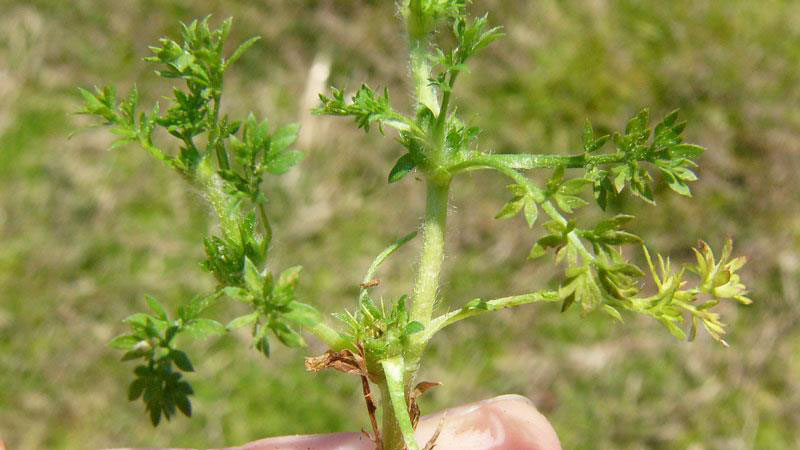Lawn Burrweed
en Español / em Português
El inglés es el idioma de control de esta página. En la medida en que haya algún conflicto entre la traducción al inglés y la traducción, el inglés prevalece.
Al hacer clic en el enlace de traducción se activa un servicio de traducción gratuito para convertir la página al español. Al igual que con cualquier traducción por Internet, la conversión no es sensible al contexto y puede que no traduzca el texto en su significado original. NC State Extension no garantiza la exactitud del texto traducido. Por favor, tenga en cuenta que algunas aplicaciones y/o servicios pueden no funcionar como se espera cuando se traducen.
Português
Inglês é o idioma de controle desta página. Na medida que haja algum conflito entre o texto original em Inglês e a tradução, o Inglês prevalece.
Ao clicar no link de tradução, um serviço gratuito de tradução será ativado para converter a página para o Português. Como em qualquer tradução pela internet, a conversão não é sensivel ao contexto e pode não ocorrer a tradução para o significado orginal. O serviço de Extensão da Carolina do Norte (NC State Extension) não garante a exatidão do texto traduzido. Por favor, observe que algumas funções ou serviços podem não funcionar como esperado após a tradução.
English
English is the controlling language of this page. To the extent there is any conflict between the English text and the translation, English controls.
Clicking on the translation link activates a free translation service to convert the page to Spanish. As with any Internet translation, the conversion is not context-sensitive and may not translate the text to its original meaning. NC State Extension does not guarantee the accuracy of the translated text. Please note that some applications and/or services may not function as expected when translated.
Collapse ▲Description
Lawn burrweed (Soliva sessilis), also known as spurweed, is a very low-growing winter annual weed that closely resembles parsley-piert and knawel. It is freely branched and usually does not root at the nodes. The leaves are oppositely arranged and highly divided into little leaf segments. Flowers are small (1⁄4 inch or less), broad, and inconspicuous. The seeds have sharp spines, hence the common name. Lawn burrweed is commonly found in turfgrass systems. Infestations are increasing in North Carolina, particularly in the southern Coastal Plain and Piedmont.
Cultural Control
Winter annual broadleaf weeds germinate in the fall or winter and grow during any warm weather, which may occur in the winter, but otherwise remain somewhat dormant during the winter. They resume growth and produce seed in the spring and die as temperatures increase in late spring and early summer. They quickly invade thin turf areas especially where there is good soil moisture. Shade may also encourage growth. Many have a prostrate growth habit and are not affected by mowing. A dense, vigorous turf is the best way to reduce the encroachment of winter annual weeds. First, select adapted turfgrass cultivars for your area and then properly fertilize, mow, and water to encourage dense growth.
Species Data
- GROWTH SEASON / LIFE CYCLE
- winter annual weed
- GROWTH HABIT
- prostrate, spreading
- LEAFLET NUMBER
- one
- LEAF MARGIN
- three-lobed with each lobe again divided into lobes
- LEAF HAIRS
- upper/lower surface; sparsely hairy
- LEAF / LEAFLET SHAPE
- heart/kidney/spade
- LEAF WIDTH
- <1⁄2 inch
- LEAF VENATION
- palmate
- LEAF ARRANGEMENT
- opposite
Figure 5
- opposite
- ROOT TYPE
- fibrous
- FLOWER COLOR
- inconspicuous







